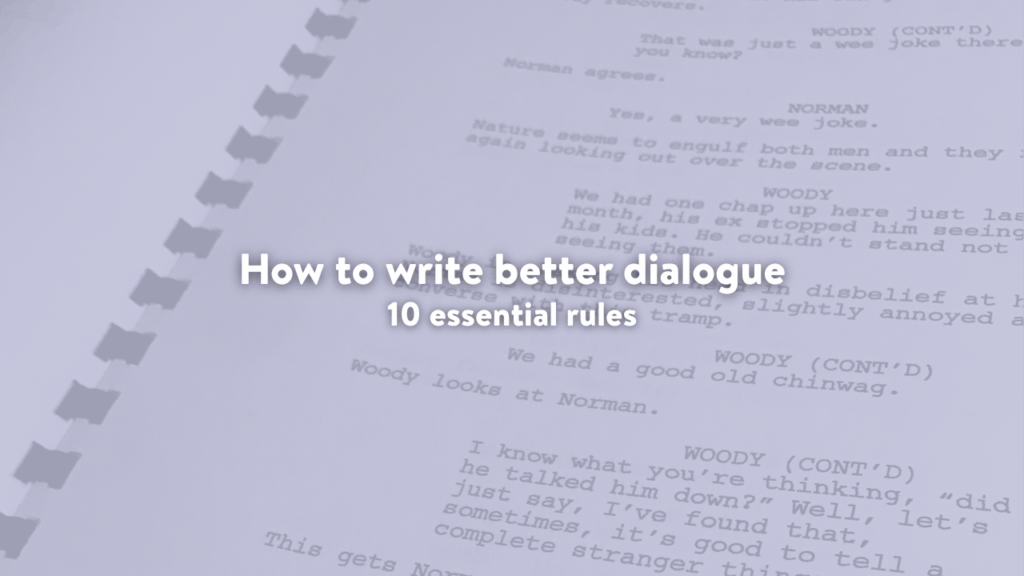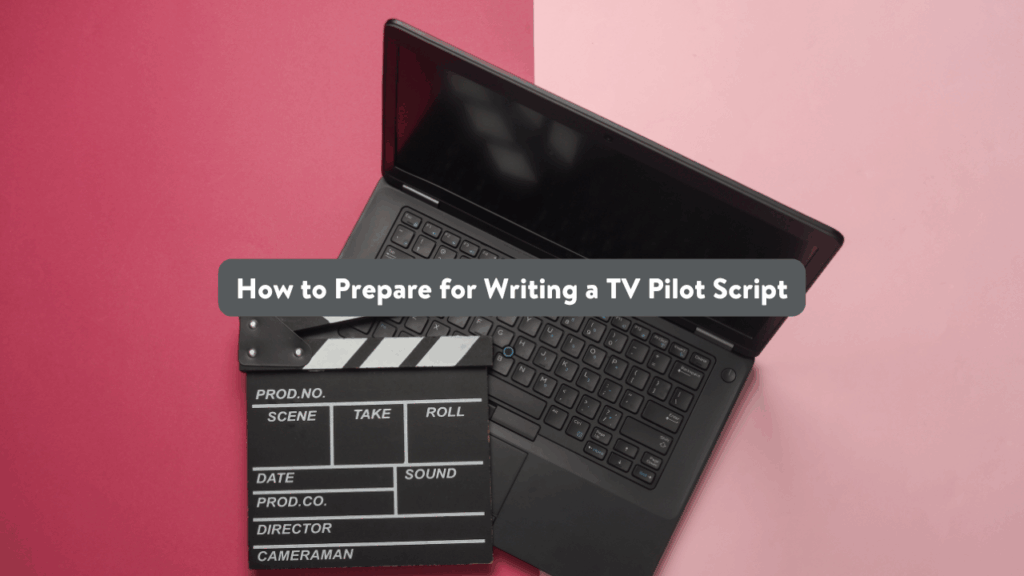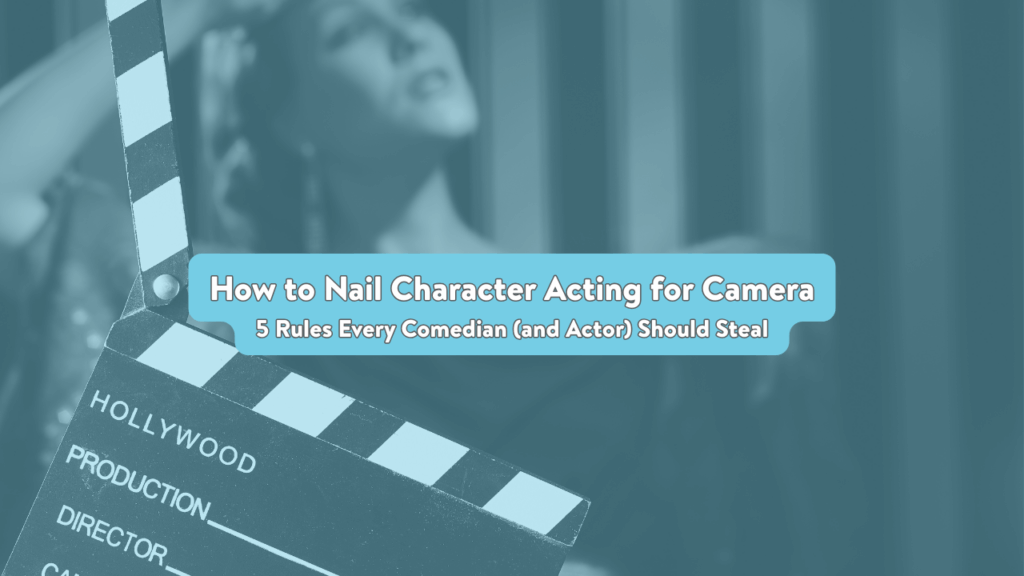How to write better dialogue: 10 essential rules

When you’re starting out in screenwriting (or sketch comedy, or playwriting, or…graphic novels?), one of the toughest parts is nailing dialogue. Never fear! Firstly, you’re not alone. Dialogue can be tricky for even the most experienced script writers. Secondly, I got you, babe. If you implement all ten of these hacks, you’ll nail your dialogue every time.
1. Cut the greetings, goodbyes, and character names.
Skip the “Hi, how are you?” unless it’s important to the scene. And if your characters have met before, they probably won’t need to refer to each other by name. The beautiful part of script writing is that you can start scenes mid-thought or in conflict. Not only does this create a snappy pace and memorable scenes, it also pulls the audience in.
2. No full sentences!
People rarely speak in full, perfect sentences. Let characters cut each other off, trail off, or talk over each other. It creates energy and realism. Pacing is everything. Everything is pacing. In script writing, grammar can hinder OR help you–use punctuation and sentence fragments to your benefit (or those same tools could end up messing you up!).
3. Give each character a “verbal fingerprint.”
Think: vocabulary, rhythm, slang, or even favorite filler words. If you covered up all the character names, could you tell who’s talking? Think about Debbie Downer–no one else in those sketches talk the way she does. Think about a scene of The Office–every character has a specific verbal style. (AND every line tells you something about the character, the joke of the scene, or plot of the show–that’s on script efficiency, babe.)
4. Avoid “on the nose” speech.
People rarely say exactly what they mean. Let your characters dodge, hint, or contradict themselves. In longer scripts, subtext is a secret weapon: an audience reading between the lines is an engaged audience. With an engaged audience, every little twist or joke lands harder. On-the-nose dialogue is boring; give your characters layers and let the humor or drama do some heavy lifting. (WARNING: this is not ALWAYS useful in sketch comedy. Sometimes you still don’t want or need characters to be 100% upfront all the time, but when you’re getting IN and getting OUT as fast as possible…sometimes sign posting helps more than it hurts.)
5. Trim the fat.
If a line doesn’t reveal character, push the scene forward, or land a laugh—cut it. Every word counts. Every line counts. Every bit of ink on page COUNTS. In comedy or drama, efficiency = punch. Shorter lines read faster, hit harder, and make room for beats, pauses, and reactions. Less is almost always more, especially on page. Scripts are ALL about efficiency. If you can identify and trim useless words, lines, and moments…NOTHING CAN STOP YOU!
6. Use action beats to break it up.
Remember what I said about pacing? (It was something about “everything”?) Long chunks of unbroken dialogue can feel like a ping-pong match. In small bursts, that’s great. But the second it starts to feel rote or boring, you’re in trouble. Avoid this by sprinkling in physical actions: sips of coffee, side-eyes, making out, clipping coupons, murdering someone: whatever! Beats like this not only give actors something to do, they add rhythm, tension, and subtle humor, while keeping the page visually dynamic.
7. Literally say it out loud.
This is your fast-track to spotting clunky lines. Dialogue that looks fine on the page can stumble in the ear. Read it aloud yourself or have someone perform it with you. You’ll hear where pacing slows, jokes don’t land, or characters start sounding the same. I often approach scene writing as improv (but I have to play all the characters). This means saying lines out (and owning them!) as I go, and helps me avoid getting stuck in chunky, sentence-filled dialogue.
8. Mine the silence.
Occasionally, what a character doesn’t say can be louder (or at least more important) than what they do say. A pause, a single-word reply, or a refusal to answer can carry just as much emotional weight. Silence also builds tension or delivers a necessary beat that lands a great joke. Use silence strategically—it’s dramatic punctuation that gives your audience space to feel. PACING PACING PACING. ALWAYS, we’re talking about pacing. We’re always talking about pacing. We’re talking about pacing, always.
9. Let characters mishear or misunderstand.
Real conversations are messy. To make your scripted conversations sound more naturalistic, let characters trip over each other, misinterpret intentions, and correct themselves. Miscommunication isn’t a mistake, it’s a basic human thing. It can add humor, tension, and unpredictability. Just don’t confuse character misunderstandings with audience misunderstandings. We generally try to avoid purposely misleading the audience (and if you do, you better have a very good reason). But, sometimes a character misunderstanding something leads to the audience having a better understanding: this is where that classic thematic magic happens in sitcoms.
10. Keep and build tension.
Even casual conversations hum with unspoken dynamics: power struggles, secret crushes, jealousy, or annoyance. If every line is neutral or too similar to the one preceding it, the scene dies. Let tension breathe, simmer, and leak through, and the audience will also breathe, simmer, and leak through…Or at least laugh and then clap when the credits roll.
You want to put your audience on a train. As long as that train chugs forward, you can make stops, pick up passengers, change the schedule, leave the dining car behind in Sacramento–anything as long as it serves your story (or joke!)–and the audience won’t get off until the train stops at their house. (These are Polar Express rules, I don’t make them up!) Good dialogue thrives on that chugga-chugga, that hum, that undercurrent. Oh, also, please don’t forget this part: PACING.




